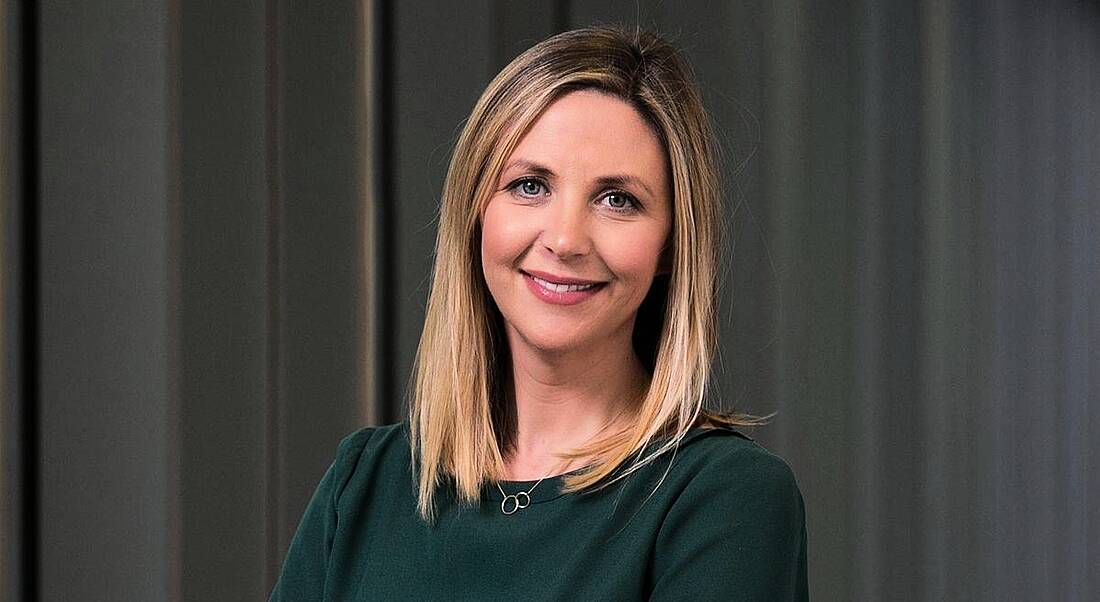Accenture’s Audrey O’Mahony reflects on the changes Covid-19 has brought to the workplace and shares her thoughts on how companies will need to cater to employee needs, now and in the future.
Are the changes we’ve encountered at work during Covid-19 here to stay? How has the organisational hierarchy been affected? I ask Audrey O’Mahony, a managing director in talent and organisation at Accenture, for her thoughts. When it came time to react internally to the challenges posed by the pandemic, putting employees first was her main concern.
“As a global business we were quite used to using technology-based collaboration tools, but working this way at home and on a sustained basis was new for many of us,” she says. “We worked with employees to ensure we understood the extent to which people could balance the demands of work and home life, particularly parents and carers.
“We then quickly mobilised an office-wide campaign centralising all our support tools, information and policies in one place with easy access, focusing on communications, health and wellbeing, and ‘learning for the new’.”
This became a place where employees could access “practical support and help” and get regular updates from the leadership team. People could use it to learn new skills, share their experiences and take part in “team quizzes, yoga sessions or a virtual coffee”.
“Our key goal was to ensure our people had a sense of belonging and that they felt supported,” she adds.
‘A tale of two halves’
As someone who works with large companies across all industry sectors to help them future-proof their teams, O’Mahony has been privy to some of the lessons businesses have learned in the past few months.
“I think for several companies it’s been a tale of two halves,” she says. “Many of our clients have been surprised by what can be achieved remotely and by the pace and scale of change that they were able to push through at the height of the crisis.”
One of the biggest realisations O’Mahony witnessed has been Covid dispelling some of the preconceptions around remote working “diluting productivity”.
“For some, that’s been a radical shift and it means it will be easier for them to reimagine their future working models” she says.
“On the other hand, many of our clients have felt the pain of not being agile enough or digital enough to serve customers differently at the pace needed or to redeploy people to different work. This is reshaping how they are now thinking about where they need to invest to become both a more resilient and a more responsive business.”
O’Mahony believes that many of these changes in attitudes will be here to stay and that choice is the main driver. “Our recent research indicates that many employees will expect to have the choice.
“The important thing for organisations to consider will be how they can reimagine their office space to be a brilliant cultural touchpoint for employees and how they get the right blend of on-site and remote working. With employees spending much more of their time at home, the needs and uses of the physical office environment will be different.”
Reaching an ‘inflection point’
A lot of time has been spent reflecting on Covid-19 and predicting what’s to come down the line, but thinking about the near future is just as important. O’Mahony believes there is a “considerable shift” in store for what we do and how we do it.
“While we face into a future with a lot of uncertainty, I think we can bank on consumers continuing to demand more personalised digital experiences,” she says. “In order to deliver on this expectation, organisations will need to rapidly accelerate data and digitally led automation journeys. That therefore creates an imperative for leaders to focus on reskilling the workforce for future needs.”
‘The important thing for organisations to consider will be how they can reimagine their office space to be a brilliant cultural touchpoint for employees’
– AUDREY O’MAHONY
But it’s not just upheavals to working life we’ve contended with in recent months. Combined with recent social and political changes, the pandemic has “created an inflection point for a lot of companies”, O’Mahony says. “I’m optimistic that we will see the trend towards responsible business accelerate as companies re-evaluate their responsibilities to a breadth of stakeholders, not just shareholders.
“Already we are talking to clients about how remote working trends need to ensure we can create a more inclusive and balanced society, where everyone has equal access to work, irrespective of gender, race, social background and so on.
“I also think we can expect improvements in our homeworking software and hardware. While Zoom and Microsoft Teams have been brilliant, we should expect trends towards making virtual working much more akin to working with people in real life.
“How many times have you said in the last six months to someone ‘I think you are on mute’? I think we can expect considerable advances in the experience of working from home, making it much easier and more natural to experience body language and eye contact, to be able to pre-empt when someone else is going to talk. I think we’ll all welcome those advances!”
Moving beyond the organisational hierarchy
O’Mahony has three key recommendations for businesses in how they can support employees, now and in the future. The first is to communicate “regularly and honestly”.
“People want transparent communication that shows respect and openness,” she says. “This helps to build trust and trust is key to creating cultures where people feel safe enough to embrace change.
“Secondly, ensure work activities are linked to the overarching purpose. Remote working over a long period of time can be tough going, so it’s important to ensure efforts and energy are focused on the most valuable work and that people continue to get the chance to learn and grow.
“And finally, be more human. The shared experience of remote working has levelled a lot of organisational hierarchy. Use this to demonstrate how you genuinely care for your people and also to show you care for yourself.”
She adds that it’s important to set your own boundaries between work life and home life, and to encourage your teams to do the same.
“If you are managing people, lead the way,” O’Mahony says. “Listen to your people, really listen to them and listen to them often. Many workers feel vulnerable, particularly now as we face into a challenging economic climate. Ask them how they are feeling and really listen to what they are telling you.
“Take action around what they tell you and experiment with different approaches until you find what works for you and your people. How leaders behave and respond now will have a lasting impact on an employee’s commitment to the business in the long term.”




